DEAR DOCTOR (DIA DOKUTA) (Miwa Nishikawa, 2009)
Japan Society
333 East 47th St. at First Ave.
Saturday, July 3, 1:00
Sunday, July 4, 4:15
www.japansociety.org/japancuts
www.subwaycinema.com
 In a close-knit rural village far from the hustle and bustle of Tokyo, the police have arrived, investigating the mysterious disappearance of Dr. Ino (Tsurube Shofukutei), the local doctor who takes care of everyone’s medical needs, running the clinic and making regular house calls, a trusted figure often seen riding around on his motorized bike, greeting the citizens like an old friend. As the detectives question the residents, flashbacks depict the special relationship that existed between the well-compensated doctor — the town pays him $200,000 a year — and the people. Dr. Ino had recently been joined by an intern, med-school graduate Keisuke Soma (Eita), who showed up in a flashy convertible, upset he didn’t get a position in a Tokyo hospital, but even he was soon won over by Dr. Ino’s charm and skill. But when nurse Akemi Ohtake (Kimiko Yo) has to guide Ino through a difficult procedure and city doctor Ritsuko Torikai (Haruka Igawa) has doubts about how Ino is treating her ill mother (Kaoru Yachigusa), questions arise that bring some surprising answers. Winner of three major categories at the 2009 Hochi Film Awards — Best Director, Best Supporting Actor (Eita), and Best Supporting Actress (Yachigusa) — DEAR DOCTOR is a warm, tender-hearted story written and directed by Miwa Nishikawa, who also earned accolades for her first two films, 2003’s WILD BERRIES and 2006’s SWAY. Shofukutei is terrific as Dr. Ino, a cross between Akira Emoto’s Dr. Akagi and Robin Williams’s Patch Adams (and we mean that in a good way). The solid cast also includes the ubiquitous Teruyuki Kagawa (SWAY, TOKYO SONATA, GOLDEN SLUMBER) as pharmaceutical supplier Masayoshi Saimon. DEAR DOCTOR is a real charmer.
In a close-knit rural village far from the hustle and bustle of Tokyo, the police have arrived, investigating the mysterious disappearance of Dr. Ino (Tsurube Shofukutei), the local doctor who takes care of everyone’s medical needs, running the clinic and making regular house calls, a trusted figure often seen riding around on his motorized bike, greeting the citizens like an old friend. As the detectives question the residents, flashbacks depict the special relationship that existed between the well-compensated doctor — the town pays him $200,000 a year — and the people. Dr. Ino had recently been joined by an intern, med-school graduate Keisuke Soma (Eita), who showed up in a flashy convertible, upset he didn’t get a position in a Tokyo hospital, but even he was soon won over by Dr. Ino’s charm and skill. But when nurse Akemi Ohtake (Kimiko Yo) has to guide Ino through a difficult procedure and city doctor Ritsuko Torikai (Haruka Igawa) has doubts about how Ino is treating her ill mother (Kaoru Yachigusa), questions arise that bring some surprising answers. Winner of three major categories at the 2009 Hochi Film Awards — Best Director, Best Supporting Actor (Eita), and Best Supporting Actress (Yachigusa) — DEAR DOCTOR is a warm, tender-hearted story written and directed by Miwa Nishikawa, who also earned accolades for her first two films, 2003’s WILD BERRIES and 2006’s SWAY. Shofukutei is terrific as Dr. Ino, a cross between Akira Emoto’s Dr. Akagi and Robin Williams’s Patch Adams (and we mean that in a good way). The solid cast also includes the ubiquitous Teruyuki Kagawa (SWAY, TOKYO SONATA, GOLDEN SLUMBER) as pharmaceutical supplier Masayoshi Saimon. DEAR DOCTOR is a real charmer.
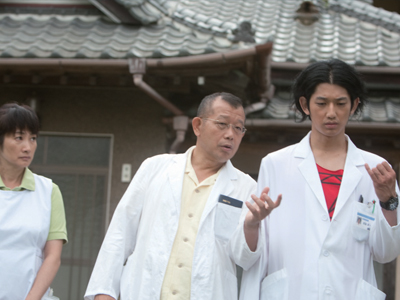
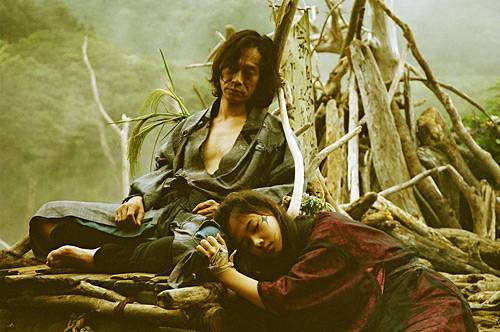
 Following a nearly five-year absence because of drug charges, Japanese director Toshiaki Toyoda (HANGING GARDEN, 9 SOULS) resurrects his once-burgeoning film career with the fascinating, meditative, and sometimes just plain silly BLOOD OF REBIRTH. In the Middle Ages, a famed traveling masseur named Oguri (Tatsuya Nakamura) has been summoned by STD-riddled lord Daizen (Kiyohiko Shibukawa) to help cure the playboy leader’s pumpkin-sized testicles. Daizen wants Oguri to stay on in his somewhat sheltered domain, far from any other society, but Oguri prefers to remain beholden to no one. Forced to hang around a while longer, Oguri becomes enamored with virgin slave Terute (Mayuu Kusakari), whom Daizen is preparing to conquer once he is rid of his disease. When Daizen learns that Oguri wants to take Terute away, he has the masseur violently murdered — and that’s only the beginning of the movie, which is centered around a sacred resurrection spring that legend says can bring people back to life. There’s also a watermelon-devouring St. Peter-like figure, an odd little person struggling to drag Oguri’s ghost body to the next life, and a wild, percussion-heavy progressive psychedelic acid rock soundtrack by Twin Tail, which features Nakamura on drums and for whom Toyoda creates the visuals for their live shows. Forget some of the clichéd characterizations and subplots and instead let the overall mood of the film carry you through some very beautiful, existential scenes, leading to one helluva different kind of one-on-one battle. Toyoda will introduce both screenings, followed by Q&A sessions.
Following a nearly five-year absence because of drug charges, Japanese director Toshiaki Toyoda (HANGING GARDEN, 9 SOULS) resurrects his once-burgeoning film career with the fascinating, meditative, and sometimes just plain silly BLOOD OF REBIRTH. In the Middle Ages, a famed traveling masseur named Oguri (Tatsuya Nakamura) has been summoned by STD-riddled lord Daizen (Kiyohiko Shibukawa) to help cure the playboy leader’s pumpkin-sized testicles. Daizen wants Oguri to stay on in his somewhat sheltered domain, far from any other society, but Oguri prefers to remain beholden to no one. Forced to hang around a while longer, Oguri becomes enamored with virgin slave Terute (Mayuu Kusakari), whom Daizen is preparing to conquer once he is rid of his disease. When Daizen learns that Oguri wants to take Terute away, he has the masseur violently murdered — and that’s only the beginning of the movie, which is centered around a sacred resurrection spring that legend says can bring people back to life. There’s also a watermelon-devouring St. Peter-like figure, an odd little person struggling to drag Oguri’s ghost body to the next life, and a wild, percussion-heavy progressive psychedelic acid rock soundtrack by Twin Tail, which features Nakamura on drums and for whom Toyoda creates the visuals for their live shows. Forget some of the clichéd characterizations and subplots and instead let the overall mood of the film carry you through some very beautiful, existential scenes, leading to one helluva different kind of one-on-one battle. Toyoda will introduce both screenings, followed by Q&A sessions.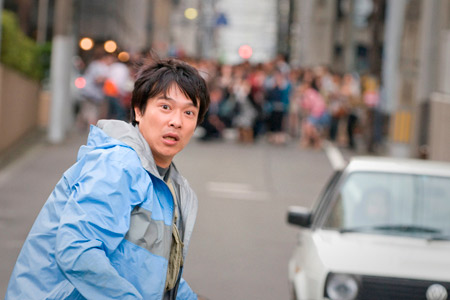
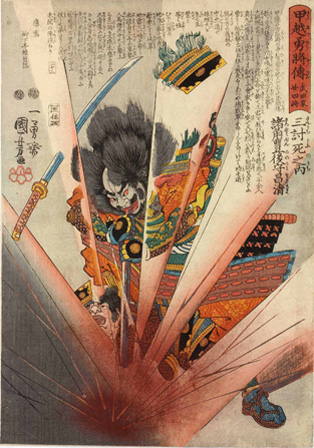
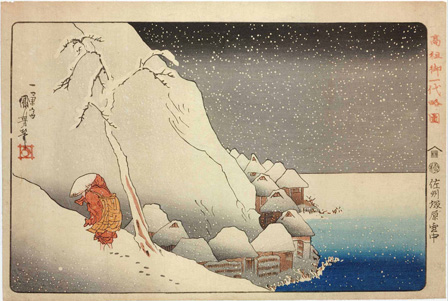
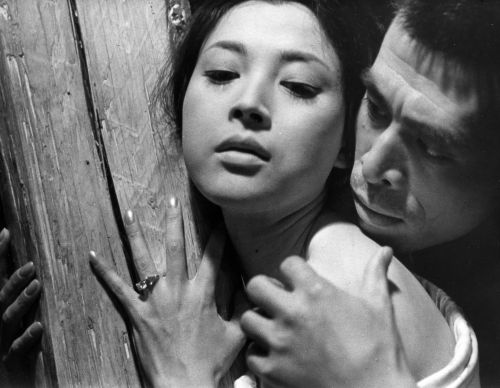



 A cult classic that spawned three sequels, Shunya Ito’s highly stylized SCORPION has everything a women-in-prison flick needs: sex, torture, rape, lesbianism, riots, sadistic male guards, shower scenes, gory violence, and lots and lots of unnecessary nudity. Set up by corrupt cop Sugimi (Isao Natsuyagi), to whom she gave her virginity, young and innocent Nami Matsushima (Meiko Kaji) is sent up the river, where she refuses to say anything about her case, leading to constant brutalization, including a harrowing hole-digging scene and some hog-tying. Afraid that she might eventually talk, Sugimi enlists another inmate, Katagiri (Rie Yokoyama), to kill her, but Matsu is not about to let anyone get in the way of her plan for revenge. Solid sexploitation all the way, SCORPION lays out much of the groundwork for Quentin Tartantino’s KILL BILL flicks; in fact, he even used the film’s theme song, “Urami-Bushi” (“Her Song of Vengeance”), which is sung by Kaji. Kaji went on to make several more FEMALE PRISONER SCORPION films with Ito and played Lady Snowblood in two movies directed by Toshiya Fujita, both of which are also part of the “Meiko Kaji: A Mad, Bad Unholy Easter Weekend” section of the Japan Society’s “Mad, Bad . . . & Dangerous to Know” film series.
A cult classic that spawned three sequels, Shunya Ito’s highly stylized SCORPION has everything a women-in-prison flick needs: sex, torture, rape, lesbianism, riots, sadistic male guards, shower scenes, gory violence, and lots and lots of unnecessary nudity. Set up by corrupt cop Sugimi (Isao Natsuyagi), to whom she gave her virginity, young and innocent Nami Matsushima (Meiko Kaji) is sent up the river, where she refuses to say anything about her case, leading to constant brutalization, including a harrowing hole-digging scene and some hog-tying. Afraid that she might eventually talk, Sugimi enlists another inmate, Katagiri (Rie Yokoyama), to kill her, but Matsu is not about to let anyone get in the way of her plan for revenge. Solid sexploitation all the way, SCORPION lays out much of the groundwork for Quentin Tartantino’s KILL BILL flicks; in fact, he even used the film’s theme song, “Urami-Bushi” (“Her Song of Vengeance”), which is sung by Kaji. Kaji went on to make several more FEMALE PRISONER SCORPION films with Ito and played Lady Snowblood in two movies directed by Toshiya Fujita, both of which are also part of the “Meiko Kaji: A Mad, Bad Unholy Easter Weekend” section of the Japan Society’s “Mad, Bad . . . & Dangerous to Know” film series.